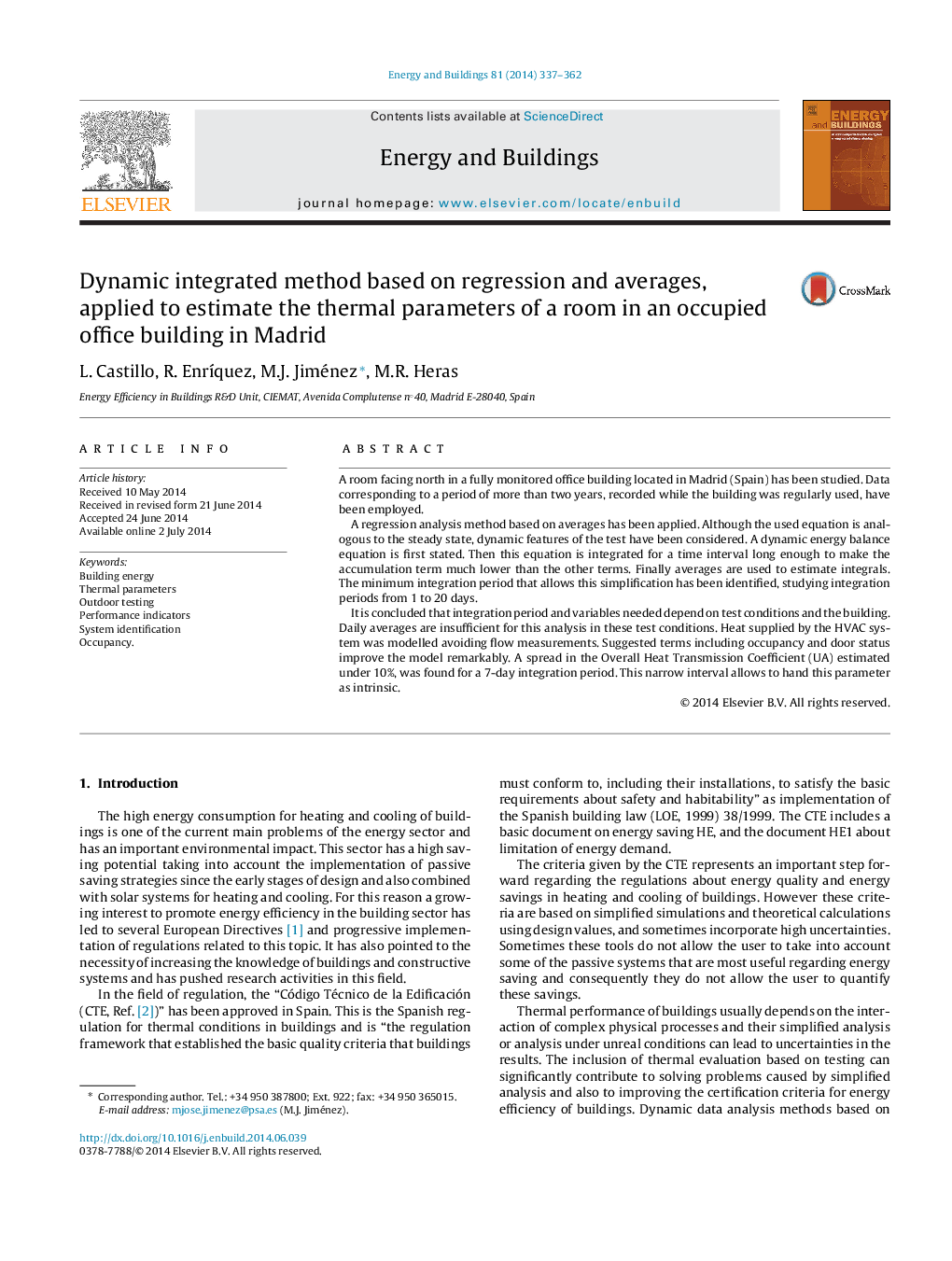| Article ID | Journal | Published Year | Pages | File Type |
|---|---|---|---|---|
| 262842 | Energy and Buildings | 2014 | 26 Pages |
•Integration period and variables needed depend on test conditions and the building.•Daily averages are insufficient for this analysis in these test conditions.•Heat supplied by the HVAC system was modelled avoiding flow measurements.•Taking into account occupancy and door status improves the model remarkably.•A spread in the UA estimated under 10%, was found for a 7-day integration period.
A room facing north in a fully monitored office building located in Madrid (Spain) has been studied. Data corresponding to a period of more than two years, recorded while the building was regularly used, have been employed.A regression analysis method based on averages has been applied. Although the used equation is analogous to the steady state, dynamic features of the test have been considered. A dynamic energy balance equation is first stated. Then this equation is integrated for a time interval long enough to make the accumulation term much lower than the other terms. Finally averages are used to estimate integrals. The minimum integration period that allows this simplification has been identified, studying integration periods from 1 to 20 days.It is concluded that integration period and variables needed depend on test conditions and the building. Daily averages are insufficient for this analysis in these test conditions. Heat supplied by the HVAC system was modelled avoiding flow measurements. Suggested terms including occupancy and door status improve the model remarkably. A spread in the Overall Heat Transmission Coefficient (UA) estimated under 10%, was found for a 7-day integration period. This narrow interval allows to hand this parameter as intrinsic.
